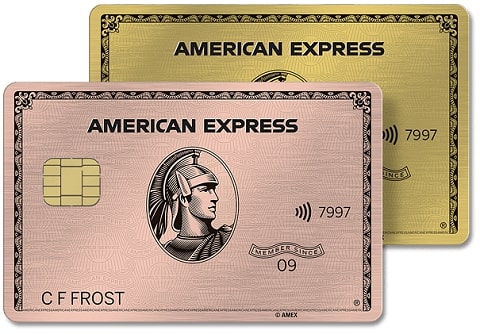Chase Sapphire Reserve Review: A First-Class Premium Travel Card
The Bottom Line
5.0
With a big sign-up bonus, elevated rewards on travel and dining, hundreds of dollars in annual credits and other perks, this card is a good choice for frequent travelers.

Rates, fees and offers
Rates, fees and offers
Annual fee
$550
Rewards rate
1x-10x
Bonus offer
Earn 60,000 bonus points after you spend $5,000 on purchases in the first 3 months from account opening.
Intro APR
N/A
Ongoing APR
APR: 20.24%-28.74% Variable APR
Cash Advance APR: 29.24%, Variable
Penalty APR: Up to 29.99%
Balance transfer fee
Either $5 or 5% of the amount of each transfer, whichever is greater.
Foreign transaction fee
$0
More details from Chase
More details from Chase
- Earn 60,000 bonus points after you spend $5,000 on purchases in the first 3 months from account opening.
- $300 Annual Travel Credit as reimbursement for travel purchases charged to your card each account anniversary year.
- Earn 5x total points on flights and 10x total points on hotels and car rentals when you purchase travel through Chase Travel℠ immediately after the first $300 is spent on travel purchases annually. Earn 3x points on other travel and dining & 1 point per $1 spent on all other purchases
- Get 50% more value when you redeem your points for travel through Chase Travel℠. For example, 60,000 points are worth $900 toward travel.
- 1:1 point transfer to leading airline and hotel loyalty programs
- Access to 1,300+ airport lounges worldwide after an easy, one-time enrollment in Priority Pass™ Select and up to $120 application fee credit every four years for Global Entry, NEXUS, or TSA PreCheck®
- Count on Trip Cancellation/Interruption Insurance, Auto Rental Coverage, Lost Luggage Insurance and more.
- Member FDIC

Pros and Cons
Pros
High rewards rate
Luxury perks
Premium travel protections
Transfer partners
Primary rental car coverage
Cons
High annual fee
Requires excellent credit
Detailed Review
For avid travelers, the Chase Sapphire Reserve® is a good deal — even with its $550 annual fee.
Thanks to features such as an annual $300 travel credit, as well as bonus rewards that can be transferred at a 1:1 ratio to several loyalty programs, it stands out as one of the best premium travel cards available.
However, to earn the card’s highest rewards rate, you’ll have to make travel purchases through the Chase portal, which can be limiting. And while the card offers excellent overall value for those who spend heavily on travel and dining, if you can't take advantage of its more niche benefits, a different travel card could be a better fit.
Chase Sapphire Reserve®: Basics
Card type: Travel.
Sign-up bonus: Earn 60,000 bonus points after you spend $5,000 on purchases in the first 3 months from account opening.
Annual fee: $550.
Ongoing rewards:
10 points per dollar spent on Chase Dining purchases.
10 points per dollar spent on hotel stays and car rentals purchased through Ultimate Rewards®.
5 points per dollar spent on air travel booked through Chase.
3 points per dollar spent on travel and dining not booked with Chase.
1 point per dollar spent on all other purchases.
Through March 2025: 10 points per $1 spent on Lyft (7 points per dollar spent on Lyft plus 3 points per dollar spent on travel).
Foreign transaction fees: None.
Other benefits:
Up to $300 a year in statement credit automatically applied to travel purchases.
Complimentary Priority Pass Select airport lounge membership.
Access to Chase's Sapphire Lounges in select airports.
Multiple hotel and airline transfer partners.
Primary rental car coverage of up to $75,000 for theft and collision damage.
TSA PreCheck, Global Entry or NEXUS credit, worth up to $120.
“Reserved by Sapphire” restaurant-booking feature, which grants cardholders access to reservations at popular restaurants across the country.
Trip delay reimbursement.
Trip cancellation or interruption insurance.
Lyft Pink All Access membership free for two years and 50% off for the third year when you enroll (must activate by Dec. 31, 2024). This is the highest tier membership available from Lyft and retails for $199.
Through Dec. 31, 2027, the Chase Sapphire Reserve® qualifies you for a complimentary DashPass membership if you haven’t yet activated it, or a minimum of 12 months of membership, depending on the date of activation. You’ll also be eligible to receive two credits of up to $10 off each month at checkout on grocery, convenience or other non-restaurant orders on DoorDash. The card will continue offering the $5 monthly DoorDash credit in the app through Jan. 31, 2025, but beginning on Feb. 1, 2025 it will provide a new monthly benefit that gives $5 off restaurant orders on DoorDash. Terms apply.
How much is a point worth?
Chase Ultimate Rewards® points earned on this card are worth 1.5 cents each when redeemed for travel booked through Chase. Cardholders can also get more value per point by transferring them to Chase's airline and hotel partners.
Otherwise, points are worth less when redeemed for cash back, gift cards and merchandise.
MORE NERDY PERSPECTIVES
 | I'm bought into the Chase Ultimate Rewards® cinematic universe, and this card is the star. It's expensive, but redeeming points for 1.5 cents each makes them go so much further. I've also transfered points to airline partners. And using up the annual travel credit on high-speed rail tickets to bounce between cities in Spain? ¡Muy bien! Sara Rathner, writer/spokesperson, credit cards |
 | I originally applied for the Chase Sapphire Reserve card in 2017 when it was was new. The annual travel credit is the easiest to use of any premium travel card, and the ability to redeem points for 1.5 cents each through Chase's travel portal has provided a wonderful baseline value when I'm not transferring rewards to travel partners. Craig Joseph, writer, travel rewards |
 | This card was a star back when it launched. Airport lounge access unlocked my first taste of the VIP life, yet the annual fee wasn't t too tough to justify given the easy-to-use statement credits. Plus, certain transfer partners like Hyatt make points super valuable. But these days, more premium credit cards are not only catching up with this card — they're surpassing it. Priority Pass lounges are often overcrowded, and other ubiquitous card perks like statement credits for TSA PreCheck — though useful if you don't yet have it — aren't that special anymore. Chase has added benefits to compete with its newfound competition, like offering its own lounges. But in a crowded market of premium cards, it might be too late. Sally French, writer/spokesperson, travel rewards |
 | When the Chase Sapphire Reserve debuted in 2016, it lured me in (as it did many others) with its truly outstanding sign-up bonus. The problem for me was that, by the time I was ready to apply, that offer was good only in physical branches ... and there were exactly zero Chase branches in my state. I didn't let that deter me, though, from making the 3-hour-plus drive (one way) to Flowery Branch, Georgia, to apply. And yes, the card was worth every mile, with its rich rewards, generous travel credit and elevated point values for booking through Chase. When the card raised its annual fee in 2020 to $550, I tapped out. But even at that price, it's worth a hard look. Kenley Young, editor, credit cards |
Compare to Other Cards

Benefits and Perks
Big sign-up bonus
The Chase Sapphire Reserve® features the following generous sign-up bonus: Earn 60,000 bonus points after you spend $5,000 on purchases in the first 3 months from account opening.
To find out whether you pre-qualify for this card, check out NerdWallet’s pre-qualification tool.
Bonus rewards
Holders of the Chase Sapphire Reserve® can earn the following:
10 points per dollar spent on Chase Dining purchases.
10 points per dollar spent on hotel stays and car rentals booked through Chase.
5 points per dollar spent on air travel purchased booked through Chase.
3 points per dollar spent on travel and dining not booked with Chase.
1 point per dollar spent on all other purchases.
Travel and dining-related purchases made through the Chase portal will get you the highest rewards rates, which are lucrative for those who spend heavily in those categories.
And even for travel and dining purchases not made through the issuer, cardholders will still earn bonus rewards.
Plus, if you redeem those points through Chase for travel, they are worth an elevated 1.5 cents, which gives the card an impressive 4.5% effective rewards rate in those popular categories. That's a boon for folks who spend plenty in these areas — in the U.S. and worldwide as well.
Additionally, through March 2025, you can earn a total of 10 points per $1 spent on Lyft (7 points per dollar on Lyft plus 3 points per dollar on travel). That’s one of the highest earn rates you’ll find for ridesharing purchases on any credit card.
Travel statement credit of up to $300
While many premium cards offer airline fee credits for baggage fees and other select purchases, the travel credit of up to $300 on the Chase Sapphire Reserve® covers a much broader range of travel purchases, including taxi rides, campground fees and train fares.
Because this credit is applied automatically, taking advantage of it is effortless. Use this card to pay for a $20 Uber ride and — poof! — that travel credit is applied to your credit card statement right away.
Airport lounge access and Global Entry/TSA PreCheck/NEXUS reimbursement
With the Chase Sapphire Reserve®, your next layover could be spent in an exclusive lounge with a complimentary cocktail in hand. The card comes with Priority Pass Select membership, with access to over 1,000 airport lounges internationally and meal credits at select airport restaurants and bars. Plus, you'll get access to Chase's own Sapphire Lounges. As of February 2024, there are Sapphire lounge locations in Boston, New York (LaGuardia and JFK) and Hong Kong, plus a Sapphire Terrace location in Austin.
With the card's TSA PreCheck, Global Entry or NEXUS reimbursement, you can also speed through security and get to those swanky lounges a little sooner. The card offers reimbursement for the application fee for TSA PreCheck ($78) or Global Entry ($120) or NEXUS ($50) once every four years.
» MORE: The guide to Chase Lounges
Transfer partners
With the Chase Sapphire Reserve®, you can move points to several other loyalty programs at a 1:1 ratio. Transferring points and redeeming them strategically can be incredibly lucrative. NerdWallet values the points earned on this card at more than 1.5 cents per point when transferred to some partners.
Here are Chase’s transfer partners:
Full list of Chase transfer partners
Airlines
Aer Lingus (1:1 ratio).
Air Canada (1:1 ratio).
Air France-KLM (1:1 ratio).
British Airways (1:1 ratio).
Emirates (1:1 ratio).
Iberia (1:1 ratio).
JetBlue (1:1 ratio).
Singapore (1:1 ratio).
Southwest (1:1 ratio).
United (1:1 ratio).
Virgin Atlantic (1:1 ratio).
Hotels
Hyatt (1:1 ratio).
InterContinental Hotels Group (1:1 ratio).
Marriott (1:1 ratio).
Complementary cards
Like a handful of other Chase cards, the Chase Sapphire Reserve® earns Ultimate Rewards® points. That means if you already have another card in the Ultimate Rewards® family, you can generally transfer points to your Chase Sapphire Reserve®, potentially allowing you to get more value on the points earned.
Say you already have the Chase Freedom Unlimited®, which earns a minimum of 1.5% cash back on purchases, but lacks 1:1 transfer partners and bonuses when redeeming for travel through Chase. When you log on to your Chase account, you have the option of moving the rewards earned on that card to your Chase Sapphire Reserve®, where you can then transfer them to partners or book travel for 1.5 cents per point. That could effectively boost your rewards rate on the Chase Freedom Unlimited® to 2.25% or more.
The Chase Sapphire Reserve® and its lower-priced sibling, the Chase Sapphire Preferred® Card, have had their rewards, perks and bonuses tweaked over the years as the issuer has worked to keep them at the top of travelers' wallets. See our Chase Sapphire cards news page for a rundown.
Sapphire Reserve vs. Sapphire Preferred
If you're looking at the Chase Sapphire Reserve®, you might also have your eye on its lower-cost sibling, the Chase Sapphire Preferred® Card. That card has an annual fee of $95, but it lacks the same rich benefits.
Which card is the better deal for you depends on your spending. For frequent travelers, the Chase Sapphire Reserve® offers far more long-term value. The Chase Sapphire Preferred® Card is a better choice for those who don’t plan on using so many perks but still want a large sign-up bonus and elevated point values.
For a more thorough breakdown of the differences, read NerdWallet's full comparison of these two cards. Here's how they stack up at a glance:
Empty Table Header | Chase Sapphire Preferred® Card | Chase Sapphire Reserve® |
|---|---|---|
Annual fee | $95. | $550. |
Sign-up bonus | Earn 100,000 bonus points after you spend $5,000 on purchases in the first 3 months from account opening. | Earn 60,000 bonus points after you spend $5,000 on purchases in the first 3 months from account opening. |
Rewards |
Points are worth 1.25 cents apiece when redeemed for travel through Chase. |
Points are worth 1.5 cents apiece when redeemed for travel through Chase. |
Other benefits |
|
|
Learn more |
Drawbacks and Considerations
Restricting rewards
Although the Chase Sapphire Reserve® offers competitive earn rates for dining and travel spending, you’ll be able to get the highest rewards rate only if you make purchases through the Chase portal. This can significantly limit your options.
For example, restaurants available to you through the Chase Dining portal will depend on your location. This means that cardholders based in larger cities like New York, for instance, will have more options available to them than those based in smaller areas.
Similarly, to earn the card's 10x and 5x rate for travel-related spending, you’ll have to book through the Chase portal, which can prove limiting compared with buying flights or renting cars directly, for example.
Moreover, if you're not an avid spender in either of the card’s bonus categories, travel and dining, you won’t get much use out of the card. A cash-back credit card that offers more diverse and flexible rewards options would be a better fit.
Somewhat limited lounge choice
If your go-to airport doesn’t have a Chase Sapphire Lounge or Priority Pass lounge, you'll be missing out on a key benefit of the Chase Sapphire Reserve®. Capital One offers a similar alternative with the $395-annual-fee Capital One Venture X Rewards Credit Card. Cardholders also have access to Priority Pass lounges, plus Plaza Premium Lounges and Capital One Lounges at Dulles International Airport, Dallas-Fort Worth International Airport and Denver International Airport.
But if lounge access is a priority for you, a better option might be The Platinum Card® from American Express.
Though The Platinum Card® from American Express has a higher annual fee ($695), this card comes with much broader airport lounge coverage, along with plenty of other top-tier benefits. In addition to giving cardholders Priority Pass Select coverage (once you enroll), the card also offers access to several other lounge networks, including AmEx's own Centurion lounges and Delta Sky Clubs (for folks flying with Delta on the same day). Keep in mind, however, that the Priority Pass Select coverage on this card no longer includes credits to select airport restaurants, unlike the Chase Sapphire Reserve®. The card also offers several other premium benefits and statement credits, including up to $200 in Uber Cash, which can be used toward free Uber rides in the U.S. (up to $15 each month, plus a bonus $20 in December). Plus, it comes with a big welcome offer. Terms Apply.
High annual fee
If the $550 fee on the Chase Sapphire Reserve® is too rich for your blood — even with all of its big perks — look to the less-expensive Chase Sapphire Preferred® Card instead.
As mentioned earlier, the Chase Sapphire Preferred® Card has an annual fee of $95. It has the same 1:1 transfer partners as the Chase Sapphire Reserve® and a similarly robust sign-up bonus: Earn 100,000 bonus points after you spend $5,000 on purchases in the first 3 months from account opening. Although it lacks the most attention-grabbing perks, such as the $300 travel credit, it's ideal for folks looking for a versatile travel card with a lower price. Check out NerdWallet's best credit card deals to see how these cards stack up.
How To Decide If It's Right For You
Spending $550 a year on a credit card is a big deal — and probably isn’t worth it in this case if you’re not a frequent traveler. But if you fly often and can take advantage of the card's many perks, the Chase Sapphire Reserve® is worth every penny.
To view rates and fees of The Platinum Card® from American Express, see this page.
No appetite for actively managing your credit card travel rewards? This card gives you a flat 2 miles per dollar spent on most purchases. Redeem miles to "erase" any travel purchase at a penny per mile. There's a great sign-up bonus, and the annual fee is $95.
Looking For Something Else?
Methodology
NerdWallet reviews credit cards with an eye toward both the quantitative and qualitative features of a card. Quantitative features are those that boil down to dollars and cents, such as fees, interest rates, rewards (including earning rates and redemption values) and the cash value of benefits and perks. Qualitative factors are those that affect how easy or difficult it is for a typical cardholder to get good value from the card. They include such things as the ease of application, simplicity of the rewards structure, the likelihood of using certain features, and whether a card is well-suited to everyday use or is best reserved for specific purchases. Our star ratings serve as a general gauge of how each card compares with others in its class, but star ratings are intended to be just one consideration when a consumer is choosing a credit card. Learn how NerdWallet rates credit cards.
Frequently asked questions
What are the rewards on the Chase Sapphire Reserve®?
What are the rewards on the Chase Sapphire Reserve®?
The Chase Sapphire Reserve® 10 earns points per dollar spent on Chase Dining purchases through Ultimate Rewards®, 10 points per dollar spent on hotel stays and car rentals purchased through Ultimate Rewards®, 5 points per dollar spent on air travel purchased through Ultimate Rewards®; 3 points per dollar on dining and travel not booked through Chase and 1 point per dollar everywhere else. But rewards alone aren't enough to justify the hefty $550 annual fee. The card comes with an array of travel perks that can significantly reduce the cost of carrying it.
What’s the difference between the Chase Sapphire Reserve® and the Chase Sapphire Preferred®?
What’s the difference between the Chase Sapphire Reserve® and the Chase Sapphire Preferred®?
For its higher fee ($550, versus $95 for the Chase Sapphire Preferred® Card), the Chase Sapphire Reserve® earns richer bonus rewards, provides more perks and protections (travel credits, airport lounge access and more) and gives you a higher point value when you redeem for travel (1.5 cents apiece versus 1.25 cents). Both cards offer the option of transferring points to about a dozen airline and hotel loyalty programs.
Is the Chase Sapphire Reserve® card worth it?
Is the Chase Sapphire Reserve® card worth it?
If you’ll use the travel perks — like the $300 annual travel credit and lounge access — and maximize the way you earn and redeem points, the Chase Sapphire Reserve® can be a good value. If you don’t travel much, you're better off with a different card.
What credit score do you need to get the Chase Sapphire Reserve®?
What credit score do you need to get the Chase Sapphire Reserve®?
You’ll need excellent credit to qualify for this card. That generally means a score of 720 or better, but credit scores alone do not guarantee approval. Your income and other factors will also be considered.
What travel protections does the Chase Sapphire Reserve® offer?
What travel protections does the Chase Sapphire Reserve® offer?
When you pay for your rental car with the Chase Sapphire Reserve®, you’ll get primary collision damage and theft protection up to $75,000. The card also offers trip delay/cancellation insurance, lost luggage reimbursement and emergency medical evacuation.
Can I transfer points from the Chase Sapphire Reserve®?
Can I transfer points from the Chase Sapphire Reserve®?
You can transfer Ultimate Rewards® points earned on the Chase Sapphire Reserve® to 13 travel partners, including United Airlines, Southwest Airlines, JetBlue, Marriott, Hyatt and IHG.
What are the best Chase credit cards?
What are the best Chase credit cards?
Chase issues some of the better rewards credit cards on the market, including outstanding options in travel, cash-back and small-business cards. See the best Chase cards here.
About the author

Claire Tsosie
Managing Editor


